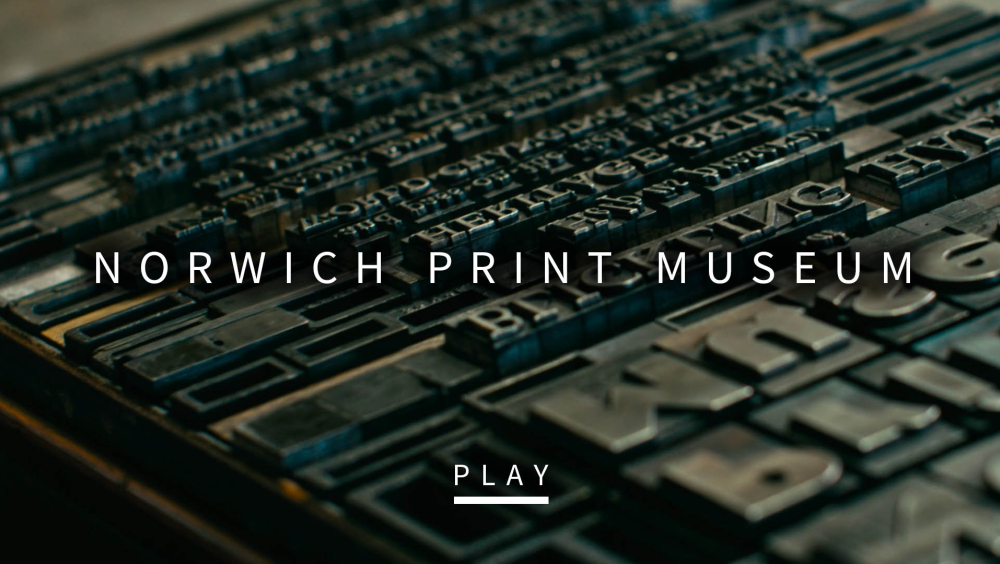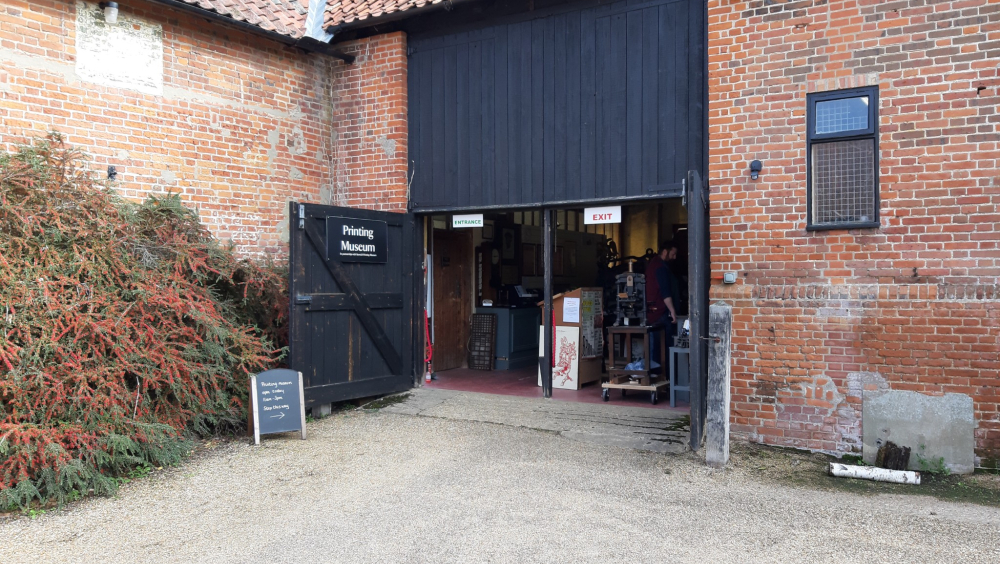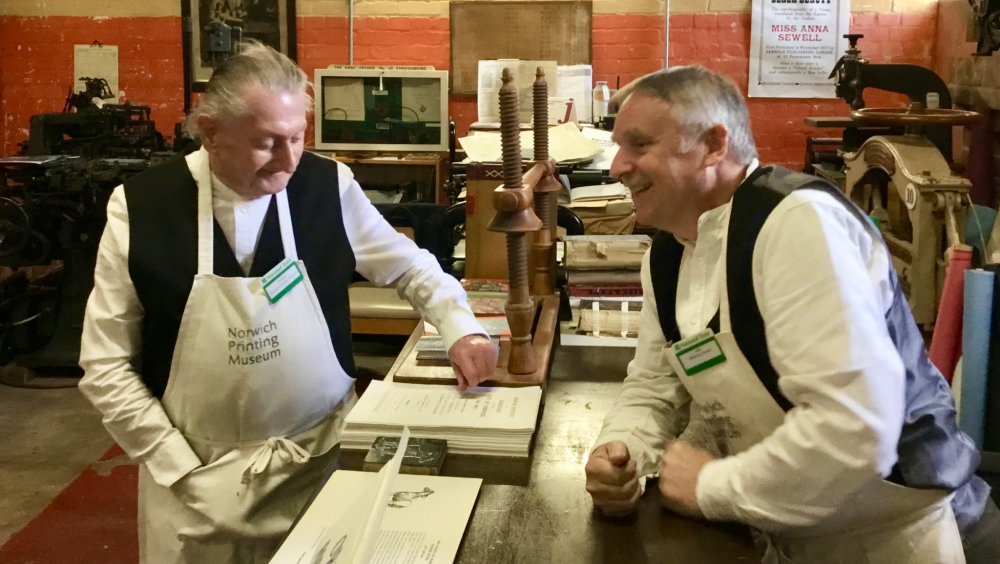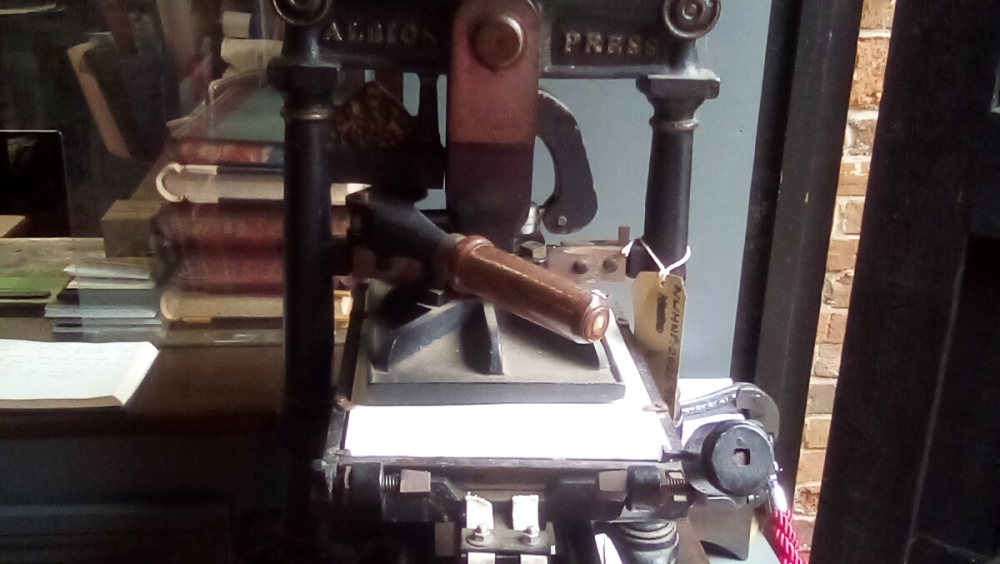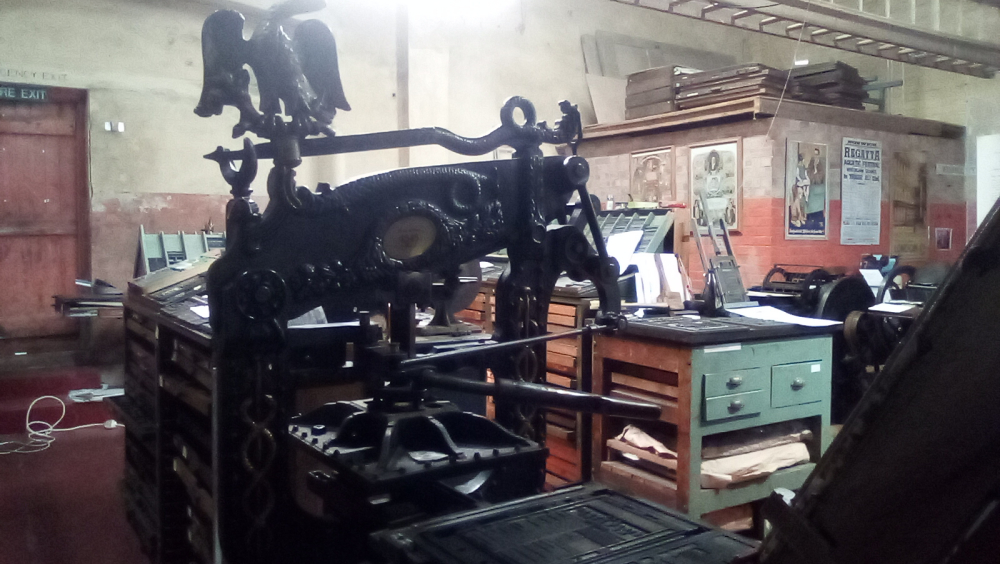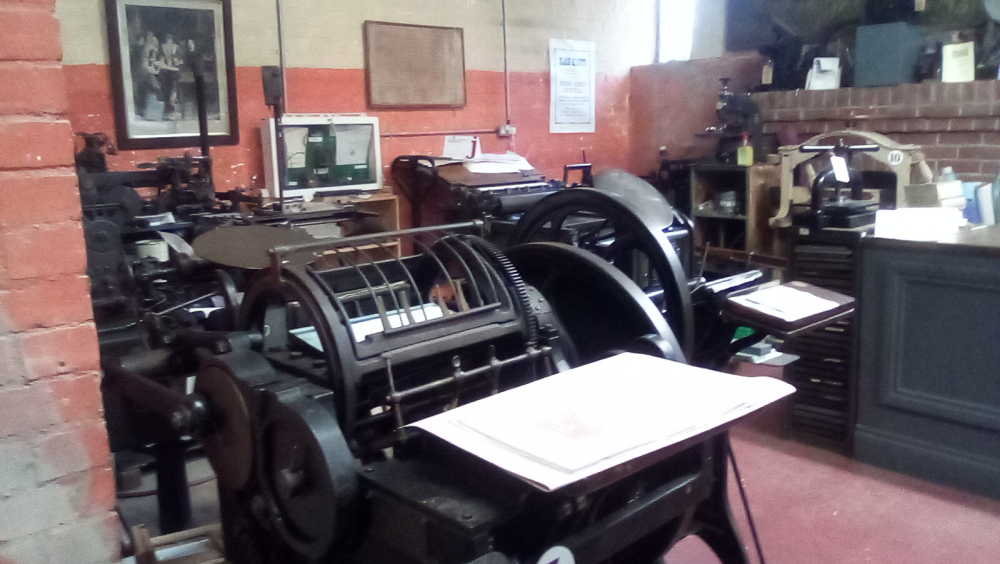The survival of a printing museum in contemporary times by linking the past with the present.
Beginning at the turn of the nineteenth century in Suffolk and then in Norwich in Norfolk, the Jarrold Printing House became an extremely successful business. Printing developed over time and Jarrolds was at the forefront of this in the United Kingdom and Europe. In 1982 a museum was formed by John Jarrold holding a collection of printing machinery and ephemera second only to the Science Museum in London. Held in the engineering workshop this museum was a working museum run by volunteers who had worked in the print for most of their lives. When this site was redeveloped in 2019, the volunteers formed a charity in order to save it. Currently the museum is housed in a space at Blickling Estate in Norfolk. The space cannot house any more than a fifth of what is held in the collection. Storage is very expensive. The museum works hard to keep going, not easy in these times. But we have built a relationship with Norwich University of the Arts so that a new generation can come in and learn the skills of Letterpress as well as developing the use of typography in a creative way. We are running a unique Study Day with the Heritage Trust in Norwich which holds an archive of early printed books. Visitors will then come to the museum to see how these books were printed and made. Also we are taking a workshop into the Norwich University of the Arts to push the boundaries of typography but also encouraging students to come and learn at first hand in the museum. Residencies are planned for next year but our funding has to be built up in order to extend it as we would wish to European students as well as those from the UK. It is a lot for a small group of volunteers to carry forward but we do what we can.
Reference. Norwich Printing Museum. You Tube.
Norwich Printing Museum, which houses the John Jarrold collection, is a beautifully unique museum whose aims are to preserve the declining art of printmaking. The museum's origins begin with the story of Jarrold dating back to 1770 when John Jarrold opened a grocers and drapers in the market place at Woodbridge in Suffolk.
He kept an immaculate notebook in which he jotted down items that appealed to him such as black ink, love poems and notable local happenings. By the time of his early death in 1775 he had built a prosperous business which was continued by his 21 year old son. John Jarrold II took up the reins in 1794. It is believed that his widow took her family to Norwich, her native city. The start of the 19th century saw the entrepreneurial John Jarrold II diversify from retail into farming and then into printing, chasing the most economically advantageous business at the time.
Thriving Norwich provided the ideal place to move the business to in 1823.John Jarrold II set up as a book seller, publisher and printer at 3 Cockey Lane ( now London Street ), opposite the present premises which he ran with his four sons, John James, Samuel, William and Thomas. in 1840 they moved to part of the present site on London Street. Over the next 164 years the company gradually acquired the rest of the current site of what is now Jarrolds, a large retail shop.
Offices were opened in London and new printing works were built in Little London Street in about 1860.Thomas Jarrold was one of the originators of The Norfolk News, printed by Jarrold from 1853 to1858. It was a forerunner of Archant, publishers of The Eastern Daily Press and Norwich Evening News.
As time moved on and printing techniques developed, the company invested in automation and new technologies including photo-composition and photolithographic processes, moving away from the old traditional methods for commercial production.
After John Jarrold II's retirement in 1844,his son, Samuel ensured that Jarrold went on to publish an extensive series marketed as Norwich Tracts. Buy Your Own Cherries was one of the titles circulated throughout Britain and her colonies in it's hundreds of thousands. Anna Sewell's Black Beauty was published by Jarrold in 1878.
By the early part of the 20th century Jarrold had developed into a substantial retail business with a branch opening in Cromer in 1881, later to include a subscription library. A shop with printing works was also opened in Yarmouth in 1888.
East Anglia quickly became a popular summer resort and so Jarrold published a series of guide books and postcards. In 1911, in the first year of the reign of H.M.King George V, Jarrold was granted a Royal Warrant for Stationery. The Royal Stamp was proudly displayed on the illustrated cover of the first gift catalogue produced by the company in 1914.The printing activities were moved to the buildings around St James Mill which is now the company's head quarters.
Jarrold advanced printing division at Cowgate since 1902 ( now Whitefriars ) supported by a general publishing house in London, saw the company become one of the premier printing operations in the world. At it's maximum it employed approximately 1,500 people.
In an era of letter writing during the interwar years, Jarrolds stationary department was well stocked. They manufactured stationery on a large scale for the forces during the war.
The second World War wreaked havoc for the business when the Yarmouth branch was bombed in 1941 destroying the print works, although the retail shop could be repaired. Jarrold published Norwich Under Fire by George Swain, a booklet which contains fascinating photographs of the blitz on Norwich. John Jarrold bought a Harris four colour offset machine from America, the largest four colour in Europe.
In 1958 Richard, John Jarrold's second son joined the retail side of the company. His elder brother, Peter was with the printing division and younger brother, Anthony later joined the printing division. Over the next few years, the three brothers became managing directors of the divisions.
The original John Jarrold printing collection formed the nucleus of the now vast collection of printing presses, machinery, metal and wood type, a functioning bindery and an eclectic archive of printed ephemera and books. Over the years many other pieces of printing related equipment were donated to the museum as other printing houses closed their doors.
When the museum site was to be redeveloped a group of volunteers formed a charity in 2019. Now governed by a board of trustees, it is dedicated to the preservation of historic printing machinery and the advancement of training and education in the history and processes of printing, book binding and related skills with special emphasis on the endangered craft of Letterpress.
This special collection is currently housed in a space at the historic Blickling Estate, a stunning Jacobean house near the market town of Aylsham in Norfolk. The museum is run by a group of passionate volunteers and those with specialist skills to pass on to future generations the history and processes of hand composition, printing and bookbinding.
Sadly only a very small amount of the collection is housed at Blickling, the majority is in store elsewhere. Larger premises are part of a dream where we could carry on with our working print museum, one of the very few that functions in this way. Having struggled to keep everything going, we are still here, still functioning. We have our first Study Day this year in conjunction with the printed archives of the Heritage Trust in Norwich. And we are holding a workshop with Norwich University of the Arts where we will be letting the students push the boundaries of typography as well as instilling, we hope, the germs of a love for Letterpress and all it entails.
Reference Norwich Printing Museum. You Tube and Website.
The Heritage Days for this year in the United Kingdom has the title ROUTES, NETWORKS AND CONNECTIONS. It is the perfect description for Printing.
Printing has shaped the world, spreading by diverse ROUTES from China in the seventh century through Asia, Africa and Europe to the Americas and the World. The Norwich Printing Museum reflects the European phase of that history, from the late middle ages to the present day. It was built up largely by Peter Jarrold via his NETWORK of friends and colleagues in the printing industry over forty years. The collections of the Museum, which is now an independent trust with a working display at Blickling Estate in Norfolk, demonstrates the CONNECTIONS between Norwich, it's people and culture, the printers and the industry of the nation, the continent and beyond.
